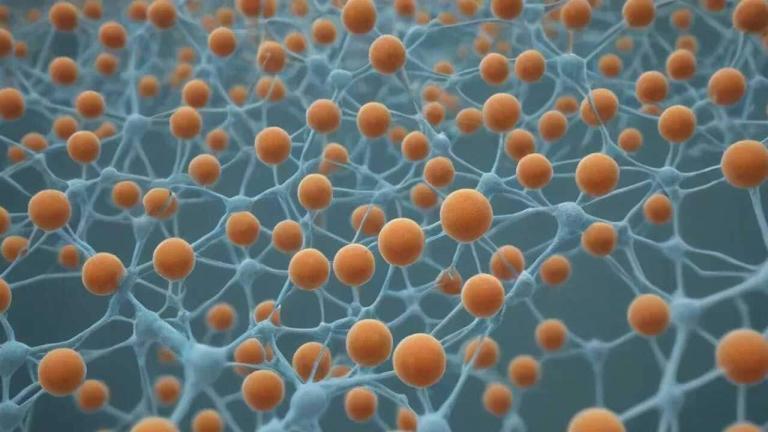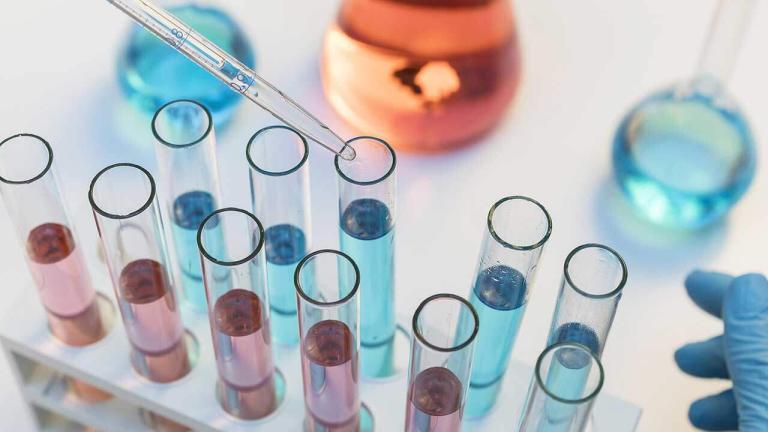
Ensuring a smooth technology transfer with a Contract Development and Manufacturing Organization (CDMO) is a critical component of the pharmaceutical and biotechnology industries.
It involves the transfer of product and process knowledge between development and manufacturing teams, ensuring that therapeutic products are manufactured consistently, safely, and efficiently.
This article will explore the key steps, considerations, and best practices for a successful technology transfer, emphasizing the importance of strategic planning, clear communication, and thorough documentation.
Introduction to Technology Transfer
According to market.us, the CDMO market is expected to grow from $172.6 billion to $322.7 billion in 2033, with a compound annual growth rate (CAGR) of 7.2%. Technology transfer is a comprehensive process that encompasses the transfer of documents, materials, processes, and knowledge necessary for the development, scaling up, and commercial manufacturing of pharmaceutical products.
The collaboration between the originating company and the CDMO is important, as it ensures that the product’s quality, efficacy, and safety are maintained when transitioning from a laboratory scale to commercial production.
Why are Technology Transfers Challenging?
Technology transfer in the pharmaceutical and biotechnology industries is a complex and challenging process. One of the primary challenges is ensuring that the product’s quality, efficacy, and safety are maintained when transitioning from a laboratory scale to commercial production. This requires precise replication of the manufacturing process, which can be difficult due to differences in equipment, scale, and environmental conditions between the development and manufacturing sites.
Another challenge is the need for effective communication and collaboration between the originating company and the Contract Development and Manufacturing Organization. Miscommunication or lack of alignment can lead to delays, increased costs, and potential quality issues. Additionally, regulatory compliance adds another layer of complexity.
Between 2017 and 2021, there were 244 publicly announced M&A transactions involving CDMOs. These transactions reflect ongoing consolidation in the market. EY teams analyzed these M&A deals and also reviewed 92 publicly announced internal investments made by 15 global CDMOs.
Both parties must navigate a web of regulations and ensure that all documentation, validation, and quality control measures meet the stringent standards of regulatory authorities. This requires a deep understanding of the regulatory landscape and constant vigilance to maintain compliance throughout the technology transfer process.
Importance of Smooth Technology Transfer with a CDMO
The importance of a smooth technology transfer process with a Contract Development and Manufacturing Organization (CDMO) cannot be overstated in the pharmaceutical and biotechnology sectors.
This critical phase bridges the gap between drug development and commercial manufacturing, ensuring that innovative therapies are produced at scale without compromising quality, efficacy, or safety.
A successful technology transfer is pivotal for several reasons:
- Quality and Compliance: It guarantees that the manufacturing process adheres to the stringent regulatory standards required in the pharmaceutical industry, ensuring that products meet the necessary quality criteria.
- Efficiency and Speed to Market: Streamlining the technology transfer process can significantly reduce time to market for new drugs, providing patients with faster access to life-saving medications.
- Cost Management: Efficient technology transfer can lead to cost savings by minimizing production issues, reducing waste, and avoiding delays that can inflate development and manufacturing expenses.
- Risk Mitigation: Proper planning and execution of technology transfer help in identifying and mitigating risks early, preventing potential problems that could impact production or lead to regulatory non-compliance.
Steps Involved in Smooth Technology Transfer with a CDMO
In a smooth technology transfer with a Contract Development and Manufacturing Organization, careful planning, effective communication, and meticulous execution are paramount. This section outlines the essential steps involved, from initial planning and knowledge transfer:
Planning and Preparation
A successful technology transfer begins with meticulous planning and preparation. The first step is selecting a CDMO that aligns with the company’s needs, capabilities, and regulatory requirements.
Once a partner is chosen, both parties should establish a project team composed of members from key functional areas, including research and development, quality assurance, regulatory affairs, and manufacturing.
The development of a detailed technology transfer plan is essential. This plan should outline the scope of the transfer, including the processes, equipment, analytical methods, and documentation to be transferred. It should also include timelines, milestones, responsibilities, and risk management strategies.
A comprehensive project plan helps ensure that all parties are aligned and that the transfer can proceed smoothly and efficiently.
Knowledge Transfer and Documentation
Proper documentation and procedures are essential for a smooth tech transfer. Diligent planning and experienced experts help avoid pitfalls and ensure optimal process reproducibility. This involves not only the transfer of physical materials and products but also the sharing of critical process knowledge and data.
The originating company should provide the CDMO with detailed documentation, including product development reports, process descriptions, validation reports, and quality control data. This documentation is important for understanding the product and process and for ensuring that the CDMO can replicate the manufacturing process accurately.
Documentation should be clear, thorough, and compliant with regulatory requirements. It should also be reviewed and updated regularly to reflect any changes or optimizations to the process.
Ensuring that the CDMO fully understands the product and process is essential for maintaining product quality and regulatory compliance.
Scale-Up and Validation
Scaling up from laboratory or pilot scale to commercial scale is a critical phase of technology transfer. It involves adapting the manufacturing process to larger equipment and different manufacturing conditions while ensuring that the product’s quality attributes are maintained.
The CDMO should conduct scale-up studies to identify and address any issues that may arise during the scale-up process.
Process validation is also a key component of technology transfer. It involves demonstrating that the manufacturing process is capable of consistently producing a product that meets all quality requirements.
Both the originating company and the CDMO should work closely to design and execute validation studies, ensuring that the process is robust and reproducible at the commercial scale.
Communication and Collaboration
Effective communication and collaboration between the originating company and the CDMO are important for a smooth technology transfer. Regular meetings, clear communication channels, and collaborative problem-solving can help address any issues that arise during the transfer process.
It is also important to establish clear expectations and responsibilities for each party, ensuring that everyone is aligned and working towards the same goals.
Key Parameters for Consideration
When it comes to tech transfer between different biologics CDMOs, there are several key parameters to consider:
Equipment Compatibility: Ensure that the equipment at the receiving facility is compatible with the process requirements of the product being transferred. This includes assessing the capacities, capabilities, and technologies of the equipment to ensure they match the needs of the process. Compatibility is important to avoid potential issues during scale-up or production.
Process Understanding and GMP Compliance: The process should be thoroughly understood by both the sending and receiving units. It’s essential to determine whether the process developed by the sending unit meets Good Manufacturing Practice (GMP) requirements. A gap analysis can help identify any discrepancies between the current process and GMP standards, as well as any potential changes needed during the transfer.
Expertise of the Receiving Team: The receiving team should have strong expertise in process development and biologics manufacturing. This includes both scientific knowledge and operational skills. A team with a deep understanding of bioprocesses and experience in handling similar products can significantly smooth the transfer process and quickly identify and mitigate potential risks.
Regulatory Compliance: Both sending and receiving CDMOs must ensure compliance with all relevant regulatory requirements. This includes adherence to quality standards, documentation practices, and regulatory filings. Ensuring regulatory compliance is important for a successful tech transfer and subsequent product approval.
Risk Management: Identifying and managing risks associated with the tech transfer is essential. This involves assessing the potential impact of equipment differences, process changes, and personnel expertise on the product’s quality and safety. A robust risk management plan should be in place to address any identified risks.
Communication and Collaboration: Effective communication between the sending and receiving units is important for a successful tech transfer. Regular meetings, clear communication channels, and collaborative problem-solving can help address any issues that arise during the transfer process.
Documentation: Comprehensive documentation is a critical aspect of tech transfer. This includes detailed process descriptions, equipment specifications, validation reports, and quality control data. Proper documentation ensures that the receiving unit has all the necessary information to replicate the process accurately.
Training and Knowledge Transfer: Training the receiving unit’s personnel in the specific process and equipment is essential for a successful tech transfer. This includes hands-on training, knowledge transfer sessions, and sharing of best practices. Ensuring that the receiving team is fully trained and competent in the process can prevent potential issues during production.
Validation and Qualification: Validation and qualification of the process and equipment at the receiving site are important to ensure that the transferred process is capable of consistently producing a product that meets all quality requirements. This includes process validation, equipment qualification, and analytical method validation.
Post-Transfer Monitoring: After the tech transfer is complete, ongoing monitoring of the process and product quality is essential. This includes regular quality checks, process performance monitoring, and continuous improvement initiatives. Post-transfer monitoring ensures that any issues that arise after the transfer are quickly identified and addressed.
Regulatory Considerations While CDMO Transfer
Regulatory compliance is a critical aspect of technology transfer. Both parties must ensure that the manufacturing process and the product meet all regulatory requirements in the target markets.
This involves the preparation and submission of regulatory documents, such as drug master files (DMFs) and marketing authorization applications (MAAs), which detail the manufacturing process, quality control procedures, and validation data.
Both the originating company and the CDMO should have a thorough understanding of the regulatory landscape and work closely with regulatory agencies to ensure compliance.
Regular audits and inspections by regulatory authorities are also a key part of maintaining compliance and ensuring that the manufacturing process meets all quality and safety standards.
Post-Transfer Activities
Once the technology transfer is complete, post-transfer activities are essential for ensuring the ongoing success of the manufacturing process. This includes monitoring the manufacturing process for consistency and quality, conducting ongoing process validation, and implementing continuous improvement strategies.
Both parties should also establish mechanisms for sharing information and feedback, allowing for the rapid resolution of any issues that may arise.
Best Practices for a Smooth Technology Transfer
As COVID-19 vaccines and therapeutics roll out globally, the demand for CDMO services is skyrocketing. To ensure a smooth technology transfer, several best practices should be followed. These include:
Document the Scope and Objectives:
The initial step in technology transfer involves establishing clear communication channels between the pharmaceutical company and the CDMO. This phase is important for building a collaborative relationship and ensuring that all parties involved, from scientists to supply chain managers, understand and support the project’s objectives and timelines.
Clear documentation of the project’s scope and objectives is essential for aligning expectations and facilitating a smooth transfer process.
Develop a Detailed API Technology Transfer Plan:
The CDMO’s project management team, comprising members from various functional areas, is responsible for creating a comprehensive technology transfer plan. This plan outlines the project’s objectives, scope, timeline, key stakeholders, and communication channels.
It also details the resources required for the transfer, the process optimization steps, the gap analysis to identify potential issues, the regulatory expectations that must be met, and the plan for post-transfer support. A well-defined technology transfer plan serves as a roadmap for the entire project, ensuring that all activities are coordinated and executed efficiently.
Transfer Analytical Methods and Validate Methods:
A critical component of technology transfer is the development and validation of analytical methods. These methods are used to ensure the quality and consistency of the API. The CDMO must develop a method transfer protocol that outlines the objectives, scope, methodology, and acceptance criteria for the transfer.
This includes demonstrating the precision, accuracy, sensitivity, and specificity of the analytical methods according to regulatory guidelines. Validation of these methods is important for ensuring that they are reliable and reproducible across different manufacturing sites.
Scale-Up and Optimization:
Scaling up the manufacturing process from a laboratory or pilot scale to a commercial scale is a complex task that requires careful planning and optimization. The CDMO must focus on developing processes that are scalable, efficient, and cost-effective.
This involves integrating advanced technologies to enhance the manufacturing process and adopting a “First Time-Right” approach to avoid costly rework and ensure that the product meets quality standards from the outset.
Validation Studies:
Validation studies are conducted to confirm that each step of the manufacturing process is capable of consistently producing the API at the required quality standards. These studies involve testing the process under various conditions to ensure its robustness and reproducibility.
The results of these studies are analyzed, and any necessary corrective actions are taken to address any issues that arise. Validation is a critical step in ensuring the reliability and safety of the API.
Training and Knowledge Transfer:
Throughout the technology transfer process, continuous training and knowledge transfer are essential. The CDMO must ensure that its staff is adequately trained in the Standard Operating Procedures (SOPs), quality procedures, and continuous improvement concepts relevant to the project. This training ensures that the team is equipped with the knowledge and skills necessary to execute the technology transfer successfully.
Trial Batch and Verification:
After the technology and knowledge transfer, a trial batch of the API is produced to test whether the transfer has been successful. This batch is analyzed to verify that it meets the required quality specifications and regulatory requirements. The trial batch serves as a validation of the technology transfer process and confirms the API’s safety and efficacy for scale-up and market release.
Regulatory Submission:
Compliance with global regulatory standards is important for the successful commercialization of the API. The CDMO must ensure that all aspects of the technology transfer process meet the required regulatory requirements.
This involves preparing and submitting documentation to regulatory authorities for approval. A focus on regulatory compliance is integrated into every phase of the technology transfer, ensuring that the API meets the highest standards of quality and safety.
Continuous Improvement:
To maintain a competitive edge in the market, continuous improvement is essential. The CDMO should use feedback and data-driven insights to refine and optimize the manufacturing processes continually. This approach ensures that the processes remain efficient, cost-effective, and aligned with the evolving needs of the healthcare industry.
Technology Transfer Closure:
Upon successful completion of all stages of the technology transfer and achieving compliance with regulatory standards, the technology transfer cycle is formally closed. This closure marks the end of the transfer process and the beginning of full-scale commercial production of the API. Commercial transfers can take more than a year due to regulatory considerations and the need for acceptance of the approach by regulatory bodies
Final Words
Technology transfer is a complex but essential process in the pharmaceutical and biotechnology industries. Ensuring a smooth technology transfer requires meticulous planning, effective communication, and thorough documentation.
By following best practices and establishing a strong partnership between the originating company and the CDMO, companies can ensure that their products are manufactured consistently, safely, and efficiently, ultimately bringing valuable therapies to patients faster and more reliably.






